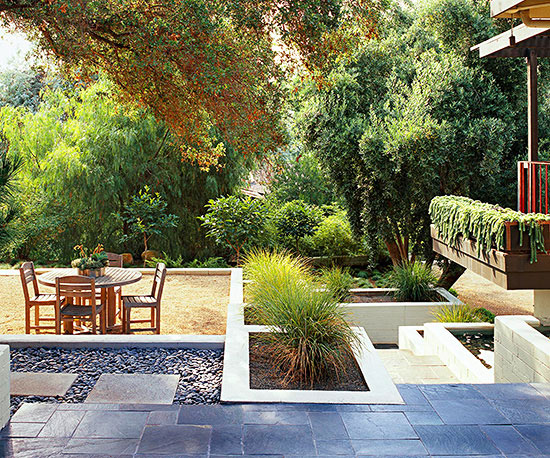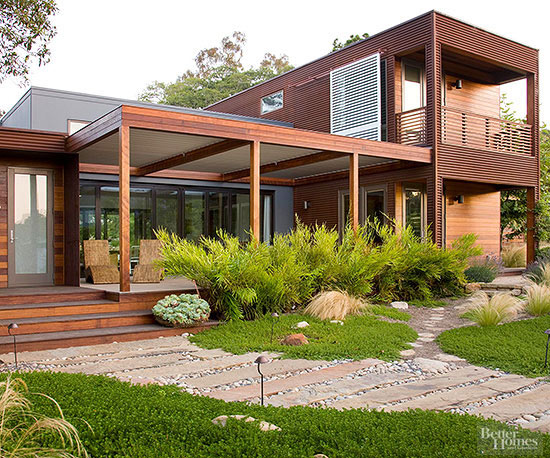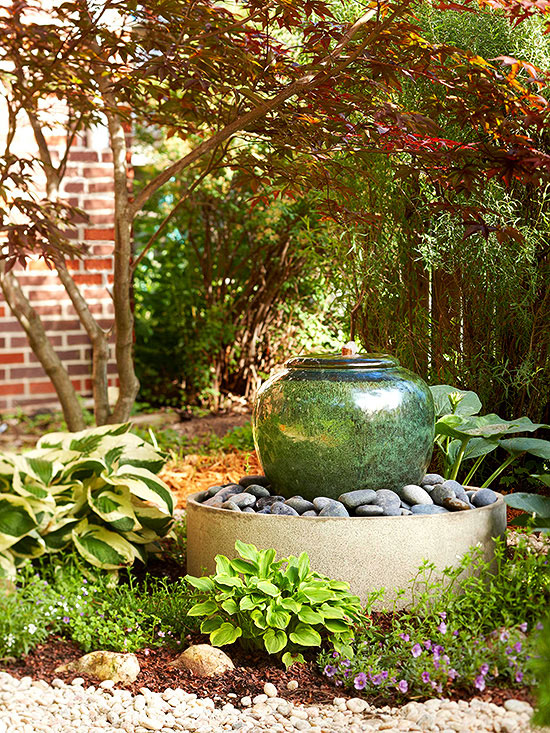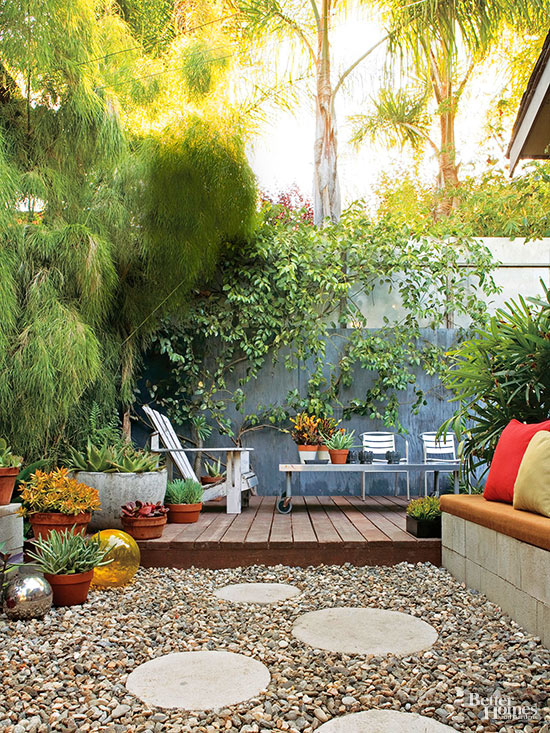






The Design
Contemporary gardens rely on repetition of plants and design motifs for continuity. That creates an uncluttered view that's anything but boring. Adjoining architecture, including a house and fences or walls, may provide a backdrop. In contemporary gardens, you'll often find plants in a continuous line or with lots of space around them that allows them to be viewed as individual elements.
continue reading belowThe Plants
While contemporary gardens rely less on color, they do need plants that can stand on their own as visually interesting.

1. Hardscaping
Angular beds are a natural choice for contemporary gardens, but circular shapes can work well depending on the landscape. If the bed is large, it may be sparsely planted in order to feature the plants as if they were sculptures. Materials often are natural in texture and color, such as slate, large and small stones, and gravel. Even mulch can take on a modern look, with slate or colored stone serving as a ground covering. Manufactured materials also are used in creative ways, with metal, glass, and tile to add color or to reflect light.

2. Water Features
Whether the material is manufactured or natural, the shapes of water features retain a modern influence. You may try a narrow water strip surrounded by cut stone and filled with architectural water plants such as frilly topped papyrus (Cyperus papyrus) or bamboo look-alike horsetail (Equisetum). Rusted iron, stainless and galvanized steel, or ceramic in subdued hues can be used for bubbling fountains or vessels to hold water gardens.

3. Accents
Modern furnishings are, of course, key to modern gardens. A variety of materials, including wood, metal, glass, or natural stone, can work. Abstract, free-form sculptures are often used as a focal point in a contemporary garden. Containers and planters follow basic geometric design. Terra-cotta is a classic choice, as are pots made from metal, stone, or wood.
Fall Gardens -- Best Plants To Grow In Cool Weather
Professional Garden Designers Modern Approach To Creating Wonderful Gardens
Scary Gardens: Help With Spooky Garden Designs
Pink Plants In Gardens: Tips For Planning A Pink Garden Design
Prairie Garden Design: Tips For Creating A Prairie Style Garden
Copyright © www.100flowers.win Botanic Garden All Rights Reserved